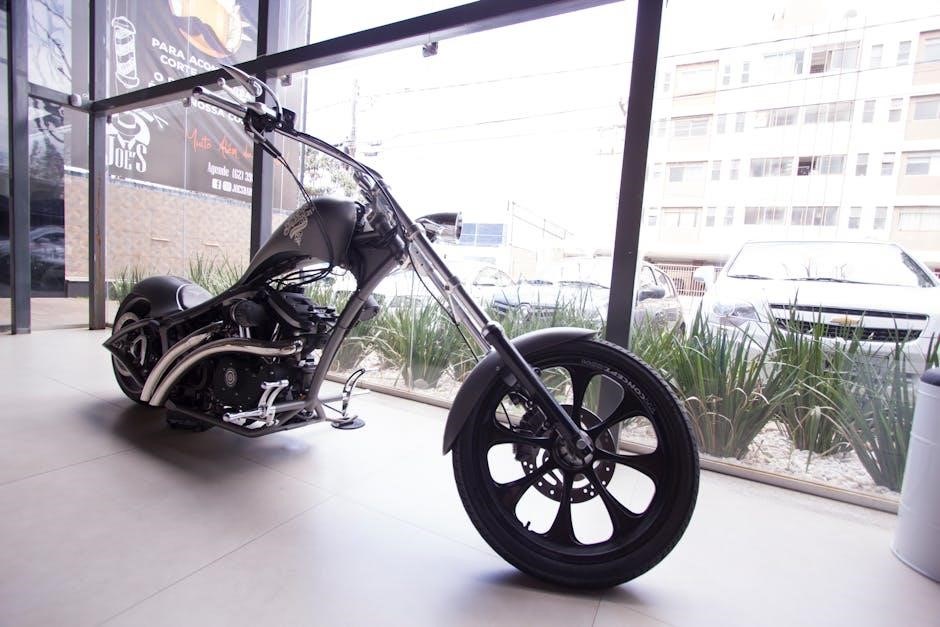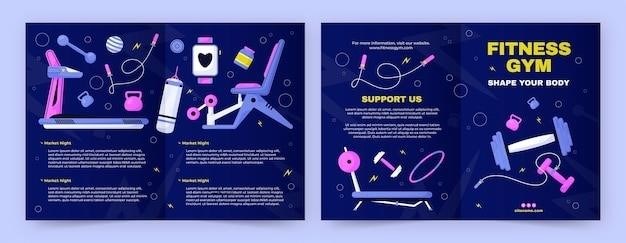Cosco Car Seat Instructions: A Comprehensive Guide to Straps (Updated 11/21/2025)
Important safety updates regarding Cosco car seat straps are now available, following a recent recall concerning the Jump, Spin & Play Activity Center and reported strap failures.
Prioritizing your child’s safety is paramount when utilizing a Cosco car seat, and understanding the intricacies of its strap systems is crucial; Recent reports, including the recall of the Jump, Spin & Play Activity Center due to strap detachment and associated minor injuries (bumps and bruises reported in 38 cases out of 141 incidents), underscore the importance of diligent inspection and proper usage.
Consumer Reports consistently emphasizes independent reviews and unbiased safety assessments. This guide provides a comprehensive overview of Cosco car seat straps, covering installation, adjustment, troubleshooting, and maintenance. We aim to empower parents and caregivers with the knowledge necessary to ensure a secure and comfortable ride for their little ones, referencing resources like the NHTSA for up-to-date safety information.
Understanding Cosco Car Seat Strap Systems
Cosco car seats employ several strap systems designed to work in concert for optimal child restraint. These include the 5-point harness, LATCH (Lower Anchors and Tethers for Children), and the top tether strap. The recent recall of the Jump, Spin & Play Activity Center highlights potential vulnerabilities in strap integrity, emphasizing the need for thorough understanding.
Each system plays a distinct role in securing the car seat and, more importantly, your child. Proper integration of these systems – as detailed in Cosco’s official guidelines and supported by resources like Consumer Reports – is vital. Understanding how these straps function, interact, and require regular inspection is key to mitigating risks and ensuring a safe travel experience.

Types of Cosco Car Seat Straps
Cosco car seats utilize three primary strap types: the 5-point harness, LATCH connectors, and a top tether, each contributing to secure installation.
5-Point Harness System Explained
The 5-point harness is a crucial safety feature in Cosco car seats, designed to distribute crash forces across a child’s stronger body parts. This system features two shoulder straps, two hip straps, and a crotch strap, all working together to secure the child.

Proper adjustment is paramount; straps must lie flat and snug against the body, with no slack. The harness should be at or below shoulder level for rear-facing infants, and at or above shoulder level for forward-facing toddlers. Regularly check for twisting, as twisted straps reduce effectiveness.
Understanding the chest clip’s role is vital: it positions the straps correctly on the shoulders, but should not be used as a tightening mechanism. Always tighten the harness using the adjustment strap located near the hips. Remember, a secure harness is the first line of defense in a collision.
Latch System and Strap Integration
The LATCH (Lower Anchors and Tethers for Children) system simplifies Cosco car seat installation, offering a convenient alternative to using the vehicle’s seat belt. However, LATCH isn’t a substitute for proper strap usage; it works in conjunction with the car seat’s harness system.
When using LATCH, ensure the lower anchors are securely connected and the tether strap (if applicable) is properly attached to the vehicle’s tether anchor point. The tether significantly reduces head excursion in a crash, adding an extra layer of safety.
Always confirm a snug fit; the car seat should not move more than one inch side-to-side or front-to-back when tested at the belt path. Remember, LATCH has weight limits – consult your vehicle and car seat manuals for specifics. Proper strap tightening remains essential, even with LATCH engaged.
Top Tether Strap: Function and Use
The top tether strap is a crucial safety feature for forward-facing Cosco car seats, dramatically reducing head movement during a collision. It connects the car seat to a designated anchor point in your vehicle – check your vehicle owner’s manual for its location.
Proper tether strap use minimizes the risk of injury by limiting how far a child’s head can move forward in a crash. Always ensure the tether is snug and taut; any slack reduces its effectiveness.
Remember, the tether works with the five-point harness, not as a replacement. It’s an additional layer of protection. Regularly inspect the tether strap for any signs of damage or wear, and always follow the manufacturer’s instructions for correct installation and adjustment.

Installing a Cosco Car Seat with Straps
Secure installation utilizing LATCH or the vehicle’s seat belt system is paramount, alongside proper tether strap engagement, to ensure optimal child safety.
Rear-Facing Installation with LATCH
Initiate rear-facing installation by locating the lower anchor connectors (LATCH) within your vehicle. Connect the car seat’s LATCH connectors to these anchors, ensuring a firm and audible click confirms secure attachment. Verify the car seat is level using the built-in indicator; adjust as needed.
Crucially, the harness straps must lie flat and not be twisted. Thread the straps through the appropriate slots based on your child’s height and weight, as detailed in the Cosco manual. Tighten the harness until you can’t pinch any excess webbing at the shoulder.
Always double-check the installation, vigorously attempting to move the car seat side-to-side and front-to-back. A properly installed rear-facing car seat provides maximum protection for infants and young toddlers, minimizing injury risk during potential impacts. Remember to consult the Cosco official website for specific model instructions.
Forward-Facing Installation with LATCH and Top Tether
Transitioning to forward-facing requires utilizing both the LATCH system and the top tether strap for optimal safety. Connect the LATCH connectors to the vehicle’s anchors, confirming a secure attachment with an audible click. Locate the top tether anchor point in your vehicle – consult your vehicle’s manual for its precise location.
Attach the top tether strap to the anchor, and tighten it to eliminate any slack. This significantly reduces head excursion during a crash. Ensure the harness straps are flat and untwisted, threaded correctly through the appropriate slots based on your child’s size.
Tighten the harness until you cannot pinch any excess webbing at the shoulder. Regularly inspect the LATCH connectors and top tether for secure engagement. A properly installed forward-facing car seat, utilizing both systems, provides crucial protection for growing children.
Belt Installation: A Step-by-Step Guide
When LATCH isn’t an option, secure installation using the vehicle’s seat belt is essential. First, position the car seat in the desired location. Route the vehicle’s seat belt through the correct belt path, as indicated in the Cosco car seat manual – this is crucial for proper restraint.
Buckle the seat belt and firmly tighten it by pushing down on the car seat while pulling the shoulder belt. Eliminate all slack to achieve a snug fit. Ensure the seat belt lies flat and isn’t twisted. Verify the car seat doesn’t move more than one inch side-to-side or front-to-back when tested at the belt path.
Always double-check the installation and harness straps before each use. A secure belt installation, combined with properly adjusted straps, is vital for your child’s safety.

Adjusting Cosco Car Seat Straps for Proper Fit
Achieving a secure fit requires precise strap adjustments, ensuring your child is protected during every journey, and preventing potential harness issues.
Shoulder Strap Height Adjustment
Proper shoulder strap positioning is crucial for optimal car seat safety. As your child grows, adjusting the height of the shoulder straps is essential to ensure they remain correctly positioned – at or below the shoulders when rear-facing, and at or above the shoulders when forward-facing. Cosco car seats typically feature multiple shoulder strap slots, allowing for easy adjustment as needed.
To adjust, first loosen the harness straps. Then, locate the shoulder strap height adjustment mechanism – often found at the top of the car seat shell. Remove the straps from the existing slots and re-thread them through the new, appropriately positioned slots. Ensure both straps are adjusted to the same height level to maintain balanced protection. Finally, re-tighten the harness to achieve a snug and secure fit, verifying the strap placement before each trip. Regular checks are vital!
Croth Strap Positioning and Tightening
The crotch strap plays a vital role in preventing a child from submarining – sliding down within the car seat during a sudden stop or collision. It should always be positioned snugly against your child’s hips, not their abdomen. Cosco car seats feature adjustable crotch straps, allowing for a comfortable and secure fit for children of varying sizes.
To tighten the crotch strap, locate the adjuster buckle – typically situated near the front of the car seat. Pull the strap webbing until it’s snug, ensuring there’s no slack. You should only be able to fit one finger between the strap and your child’s hip. Regularly check the tightness, as straps can loosen with movement. A properly tightened crotch strap, combined with correctly adjusted shoulder straps, maximizes safety and restraint.
Re-Threading the Harness: When and How
Re-threading the Cosco car seat harness is necessary as your child grows and exceeds the current shoulder strap slots. This ensures the straps remain at or above their shoulders for optimal safety. Consult your car seat’s manual for specific re-threading instructions, as procedures vary slightly between models.
Generally, you’ll need to fully loosen all straps, detach the harness components from the back of the seat, and then re-insert them through the appropriate higher slots. Ensure the harness pieces are correctly aligned and securely locked into place. Always double-check that both sides are at the same height before tightening. Improper re-threading compromises the car seat’s protective capabilities, so meticulous attention to detail is crucial.

Troubleshooting Common Cosco Car Seat Strap Issues
Addressing strap twisting, tightening difficulties, or damage is vital for safety. Recent reports highlight potential strap failures, necessitating careful inspection and prompt action.
Strap Twisting and How to Prevent It
Strap twisting is a surprisingly common issue with car seat harnesses, including those found in Cosco models. While it doesn’t necessarily compromise safety immediately, consistently twisted straps can make achieving a snug, secure fit more challenging. This is because twisting reduces the effective length of the webbing, potentially requiring over-tightening.
To prevent twisting, ensure the straps are fully extended before buckling your child in. After buckling, carefully smooth out any twists before tightening the harness. Regularly check the straps – even between trips – to proactively address any developing twists. If twisting persists, consider repositioning the car seat or consulting the Cosco customer support for guidance. Remember, a properly fitted harness is paramount for your child’s safety.
Difficulty Tightening the Harness
Encountering difficulty tightening the Cosco car seat harness is a frequent concern for parents. Several factors can contribute to this issue. Firstly, ensure the buckle tongue is fully inserted with an audible ‘click’. Secondly, check for obstructions – clothing, blankets, or even the car seat padding – interfering with the tightening mechanism.
If the harness still resists tightening, try repositioning the car seat within the vehicle; sometimes, the vehicle seat’s contours can impede proper tightening. A firm pull, close to the buckle, often yields better results than pulling on the strap itself. If persistent difficulty remains, consult the Cosco official website or support resources for specific troubleshooting steps related to your car seat model. A secure harness is vital for optimal child safety.
Strap Damage and Replacement
Identifying strap damage is crucial for car seat safety. Inspect Cosco car seat straps regularly for any signs of wear, fraying, cuts, or weakening. The recent recall of the Jump, Spin & Play Activity Center highlights the potential for strap detachment and failure, emphasizing the need for vigilance.
If damage is detected, discontinue use immediately. Cosco does not authorize aftermarket strap replacements. A damaged car seat compromises the protective integrity of the system. The entire car seat must be replaced. Contact Cosco directly for guidance and to confirm if your model is subject to any current recalls. Never attempt to repair damaged straps yourself, as this can further jeopardize safety.

Cosco Car Seat Strap Recall Information (Recent Updates)
A recall affects the Jump, Spin & Play Activity Center due to 141 reports of strap detachment, resulting in 38 minor injuries to children.
Details of the Jump, Spin & Play Activity Center Recall
The recall, announced on November 21, 2025, impacts the Cosco Jump, Spin & Play Activity Center. Dorel Juvenile, the parent company, initiated this recall following numerous reports of incidents involving the product’s straps. Specifically, 141 reports were received detailing strap detachment or breakage during normal use. These failures unfortunately led to 38 reported minor injuries, primarily consisting of bumps, bruises, and scrapes sustained by infants and toddlers.
The issue centers around the straps designed to secure the child within the activity center. Consumers are strongly advised to immediately stop using the product. Detailed information regarding model numbers affected and instructions for receiving a refund or replacement are available through Cosco’s official website and the Consumer Product Safety Commission (CPSC) website.
Reported Injuries Related to Strap Failures
Analysis of incident reports reveals a pattern of injuries directly linked to the compromised straps in the Cosco Jump, Spin & Play Activity Center. While thankfully none of the reported injuries were severe, the sheer number – 38 documented cases – underscores the potential safety risk posed by the strap failures. The majority of these injuries consisted of minor bumps, bruises, and scrapes resulting from children falling when the straps unexpectedly detached or broke during use.
These incidents highlight the critical importance of secure restraint systems in infant and toddler products. Consumer Reports emphasizes the need for rigorous testing and quality control to prevent such occurrences. Parents and caregivers are urged to report any similar incidents to both Cosco and the CPSC to contribute to ongoing safety investigations.
Checking Your Cosco Car Seat for Recall Status
Determining if your Cosco car seat is affected by a recall is crucial for your child’s safety. Begin by visiting the official Cosco website and navigating to their recall information section. You’ll likely need your car seat’s model number and manufacturing date, typically found on a label affixed to the seat itself. Alternatively, the Consumer Product Safety Commission (CPSC) website (www.cpsc.gov) provides a comprehensive database of product recalls, searchable by brand and product type.
Regularly checking for updates is recommended, as recall information can change. Consumer Reports also offers resources and guidance on identifying and responding to product recalls, ensuring parents have access to the latest safety information.

Maintaining Cosco Car Seat Straps
Consistent inspection and proper cleaning are vital for strap longevity and safety, especially considering recent reports of strap detachment and potential injuries.
Cleaning and Care Instructions
Maintaining clean straps is crucial for both hygiene and functionality. Regularly inspect the straps for any visible debris, food particles, or spills. For routine cleaning, use a damp cloth with mild soap and water; avoid harsh chemicals or abrasive cleaners that could weaken the material.
Always ensure the straps are completely dry before reinstalling the car seat. Check for any signs of fraying, tearing, or damage during cleaning. If damage is detected, discontinue use immediately and consult Cosco’s official website for replacement options.
Pay close attention to areas where the straps buckle or adjust, as these are prone to accumulating dirt. Gentle cleaning and thorough drying will help preserve the integrity of the harness system, contributing to overall car seat safety.
Regular Strap Inspection Checklist
Prioritize safety with frequent strap checks! Before each use, visually inspect all five points of the harness for any signs of wear, fraying, or damage. Confirm the buckles operate smoothly and securely latch and release.
Check the strap webbing for cuts, tears, or abrasions. Ensure the adjustment straps move freely and lock properly at each height setting. Following the recent recall of the Jump, Spin & Play Activity Center, heightened vigilance regarding strap integrity is essential.
Document your inspections and immediately replace any compromised straps. Refer to Cosco’s website for official replacement parts and guidance. A proactive approach to strap inspection significantly enhances child passenger safety.
When to Replace Car Seat Straps
Immediate strap replacement is crucial if any damage – fraying, cuts, tears, or abrasions – is detected during routine inspections. Following the recent Jump, Spin & Play Activity Center recall, with 141 reports of strap detachment, proactive replacement is paramount.
Replace straps after any incident involving significant force, like a vehicle crash, even if damage isn’t immediately visible. Straps weakened internally may fail in a subsequent event.
If you’re unsure about strap integrity, err on the side of caution and contact Cosco directly for guidance. Do not attempt to repair damaged straps; always use official replacement parts. Prioritize your child’s safety by adhering to these replacement guidelines.

Resources and Further Information
Explore Cosco’s official website for support, alongside Consumer Reports’ independent car seat ratings and the NHTSA’s comprehensive car seat safety information.
Cosco Official Website and Support
For the most direct and up-to-date information regarding your Cosco car seat, including specific strap guidance and potential recall notices, the official Cosco website is your primary resource. You’ll find detailed manuals for various models, often with visual aids demonstrating proper installation and strap adjustment techniques.
Their support team can address individual concerns and provide clarification on any questions you may have about harness systems, LATCH compatibility, or top tether usage. Remember the recent recall of the Jump, Spin & Play Activity Center highlights the importance of staying informed.
Regularly check the Cosco website for safety alerts and ensure your car seat is functioning correctly. Direct contact information for customer support is readily available on their site, offering assistance with any strap-related issues or concerns you might encounter.
Consumer Reports Car Seat Ratings and Reviews
Consumer Reports offers independent, unbiased evaluations of car seats, including Cosco models, providing valuable insights into safety performance and ease of use – factors directly related to proper strap functionality. Their comprehensive testing assesses how effectively the harness system secures a child and how easily parents can adjust the straps for a correct fit.
While not directly focused solely on straps, their reviews consider strap design and adjustability as key components of overall car seat safety.
Consumer Reports maintains no financial ties to advertisers, ensuring objectivity in their assessments. Considering their findings alongside official Cosco instructions and recent recall information (like the Jump, Spin & Play issue) provides a well-rounded understanding of car seat safety and strap integrity.

NHTSA Car Seat Safety Information
The National Highway Traffic Safety Administration (NHTSA) is a crucial resource for car seat safety, offering guidelines on proper installation, usage, and recalls – all directly impacting the effectiveness of car seat straps. NHTSA emphasizes the importance of correctly threading and tightening the harness to ensure a secure fit for children of all ages and sizes.
Their website provides detailed information on LATCH systems, top tether straps, and belt installations, complementing Cosco’s specific instructions.
Given recent recalls, like the Cosco Jump, Spin & Play Activity Center, NHTSA’s recall database is essential for verifying your car seat’s status and receiving updates on potential strap-related issues. Prioritizing NHTSA’s recommendations alongside manufacturer guidelines maximizes child passenger safety.


